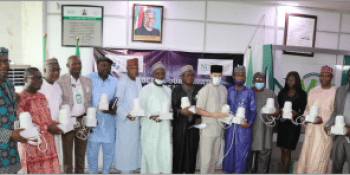Investigating El Niño-Southern Oscillation and society relationships

A new publication tells the story of how research on the El Nino-Southern Oscillation (ENSO) led to breakthroughs in predicting rainfall and temperatures months in advance, which in turn shaped how institutions and societies deal with climate-related risk.
A new publication details the history of research on El Niño-Southern Oscillation (ENSO) and how the climate phenomenon impacts society.
New knowledge about ENSO and its impacts, and new information - particularly predictions - have opened a new pathway for society to relate to ENSO: to anticipate its impacts and to take actions to manage them. The ways in which this process has played out in different settings have revealed a great deal about social and institutional dynamics, and have provided insights into how the effective uptake of climate information can be achieved in practice.
El Niño-Southern Oscillation (ENSO), a major force in the global climate system, is the interaction between the tropical Pacific Ocean and the atmosphere by which eastern and central Pacific sea surface temperatures cycle between above and below average, with cascading effects on weather and climate across the globe. As of July 2014, models predict a 75% chance of an El Niño event, or the ‘warm’ phase of the cycle, developing by late autumn in the Northern Hemisphere.
The paper gives a historical overview of the key discoveries/breakthroughs that led to our current understanding of the El Niño-Southern Oscillation and its use for seasonal climate forecasting.
The study of ENSO is important to me, as an agricultural researcher, for two reasons. First, the phenomenon contributes to large year-to-year fluctuations in seasonal precipitation and temperature. The risk due to seasonal climate variability is an obstacle to agricultural development, and keeps many farmers locked in chronic poverty. Without effective adaptation, an increasingly variable climate could intensify the cycle of poverty, vulnerability and dependence on external assistance.

THE ENSO phenomenon inspired research that led to the ability to predict climate conditions at seasonal timescales.
The second reason why I consider ENSO research to be important is that it opened the door to predicting climate conditions at a seasonal lead-time. The ability to anticipate climate conditions for the upcoming growing season can help farmers to intensify production, take advantage of improved technologies and invest in their soils when good years are predicted; and protect their farms and families when adverse climatic conditions are predicted.
ENSO holds a special place in the history of climate services. Research on ENSO led to the first successful efforts to demonstrate the predictability of seasonal climate – in fact, the first seasonal predictions were based on El Niño. The resulting advance of seasonal climate forecasting has provided strong motivation, as well as valuable new information, to the development of climate services. –Steve Zebiak, Climate Services Partnership
ENSO-related seasonal forecasts are used in many areas, including agriculture, water resources management, and health. But among these sectors, agriculture has led the way in learning how ENSO information can be put to practical use. The study found that institutions that work at the boundary between science and society play an important role in enabling ENSO-related information and prediction to be used effectively.
In the water and health sectors, forecast information is generally used by institutions, such as ministries of health and water resources management agencies. In agriculture, the user base is more diverse and more decentralized, and includes more individual users such as agricultural extension agents and farmers themselves.
The article examines three case studies that demonstrate the importance of ongoing communication between researchers and forecast users, facilitated by ‘boundary organizations’ that bridge the gap between the two. Farmers have a history of interacting with these types of organizations, and in receiving technical information tailored to their local circumstances.
In agriculture, boundary organizations can include international organizations such as the CGIAR and the United Nations Food and Agriculture Organization, national agricultural extension services, farmers’ organizations, and NGOs. Also, in many cases, farmers have traditional sources of forecast knowledge, giving them a jumping off point to understand scientific forecasting.
The role of boundary organizations emphasized in the study is a key feature of strategies to expand the reach of climate services for farmers. These institutions, with their existing relationships with farmers, can enhance the usability, relevance, and trustworthiness of forecasts and related climate information services by embedding them into trusted support networks. The CGIAR Research Program on Climate Change, Agriculture and Food Security (CCAFS) works closely with partners that already provide agricultural and development support, including extension services and NGOs, to integrate climate information services into existing support networks. Training materials to equip these partners to communicate climate forecasts to farmers are under development.
Read more about El Niño:
El Niño predicted to create winners and losers in global agriculture
Putting climate services into farmers’ hands
James Hansen is the leader of the CCAFS Research Theme on Climate Risk Management.



